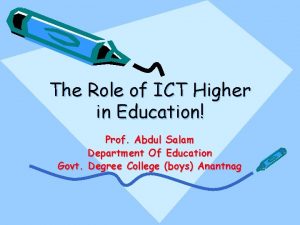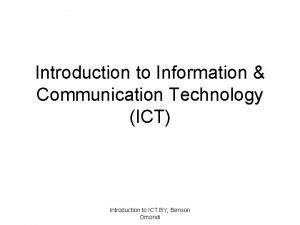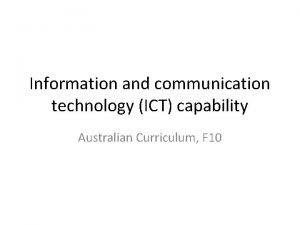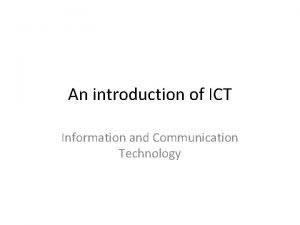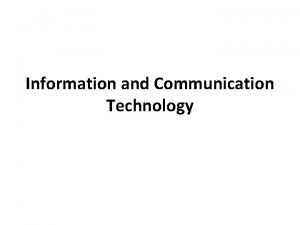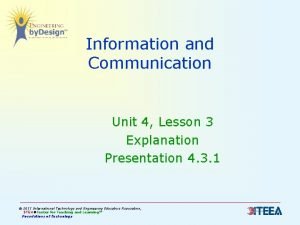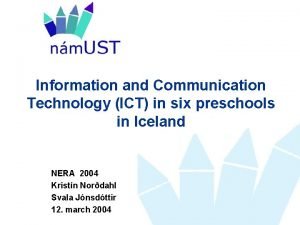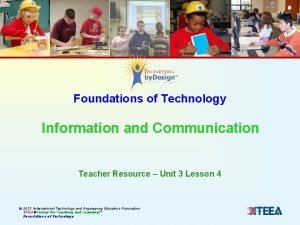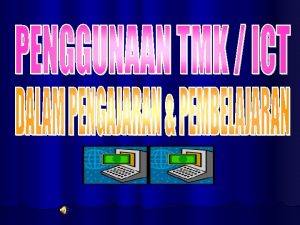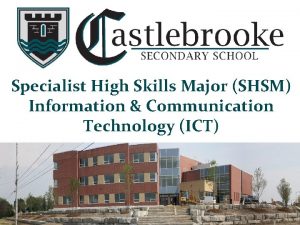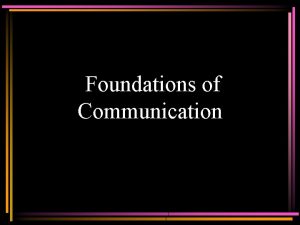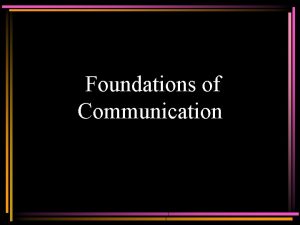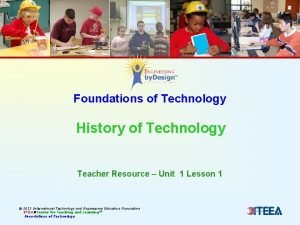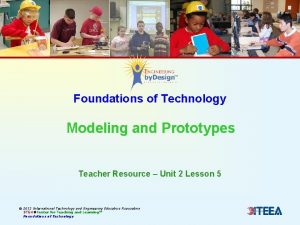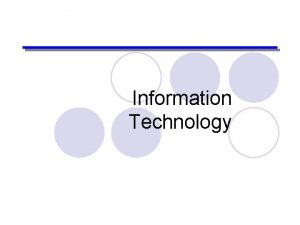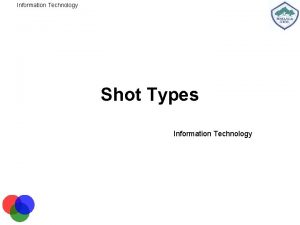Foundations of Technology Information and Communication Teacher Resource










- Slides: 10

Foundations of Technology Information and Communication Teacher Resource – Unit 3 Lesson 4 © 2013 International Technology and Engineering Educators Association STEM Center for Teaching and Learning™ Foundations of Technology

The BIG Idea Big Idea: Information and communication systems greatly impact our quality of life and are an essential component of business and industry that is rapidly expanding. © 2013 International Technology and Engineering Educators Association STEM Center for Teaching and Learning™ Foundations of Technology

The Systems Model and Communication Information and Communication systems follow the systems model and require inputs, processes, outputs, and feedback. Inputs – determine the objective of the project or the action Process – how the objective is achieved or the procedure used (includes materials, tools, supplies, etc. ) © 2013 International Technology and Engineering Educators Association STEM Center for Teaching and Learning™ Foundations of Technology

The Systems Model and Communication Information and Communication systems follow the systems model and require inputs, processes, outputs, and feedback. Output – the results of the objective Feedback – confirmation that the objective was achieved; how the objective could be improved © 2013 International Technology and Engineering Educators Association STEM Center for Teaching and Learning™ Foundations of Technology

The Systems Model and Communication Example: Sending a text message Input: the desire to send a text message Process: entering the information using a mobile phone Output: the message is displayed Feedback: confirmation of the message © 2013 International Technology and Engineering Educators Association STEM Center for Teaching and Learning™ Foundations of Technology ur Yo age ss me ere h

Information and Communication Information and communication systems can be further broken down into the: Source – the person or machine originating the communication Encoder – the device that translates the communication into a format for transmission Transmitter – the device that sends the message Receiver – the device that collects the message © 2013 International Technology and Engineering Educators Association STEM Center for Teaching and Learning™ Foundations of Technology

Information and Communication Information and communication systems can be further broken down into the: Decoder – the device that translates the communication into an acceptable format Storage – the device that stores the communication Retrieval – the device that retrieves the communication on command Destination – the person or machine who is the audience © 2013 International Technology and Engineering Educators Association STEM Center for Teaching and Learning™ Foundations of Technology

Information and Communication Example: Sending an email Source: the person typing the email Destination: the person to whom the email is addressed Encoder: the keyboard, the CPU, the email program used to create an email Transmitter: modem or wireless modem, the email program that sends the email Receiver: router, the email program that receives the email Retrieval: the software application that displays the email Storage: hard drive, server, the email program inbox Decoder: the CPU, the email program that displays the email © 2013 International Technology and Engineering Educators Association STEM Center for Teaching and Learning™ Foundations of Technology

Non-Verbal Communication Nonverbal communication is the process of communicating without using words, generally using visual cues between people. Nonverbal communication is used for interpersonal communication or communication between people Kinesics – the study of communication through gesture, posture, and movement Haptics – the study of communication through touching © 2013 International Technology and Engineering Educators Association STEM Center for Teaching and Learning™ Foundations of Technology

Non-Verbal Communication Nonverbal communication represents nearly 66% of all communication. Examples of nonverbal communication: © 2013 International Technology and Engineering Educators Association STEM Center for Teaching and Learning™ Foundations of Technology
 Information technology resource management
Information technology resource management Communication technology conclusion
Communication technology conclusion Introduction to information and communication technology
Introduction to information and communication technology Ict capability
Ict capability Introduction to ict
Introduction to ict What is the meaning of ict
What is the meaning of ict Components of information and communication technology
Components of information and communication technology Definition information and communication technology
Definition information and communication technology Nonverbal communication
Nonverbal communication Apa itu information communication technology
Apa itu information communication technology Shsm ict
Shsm ict

